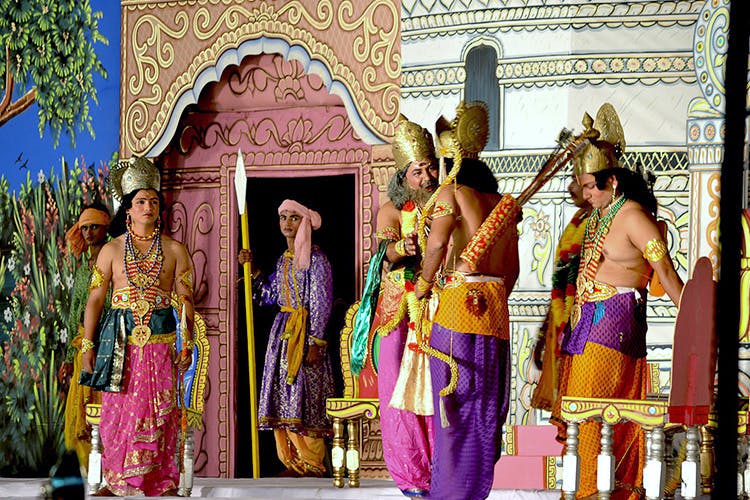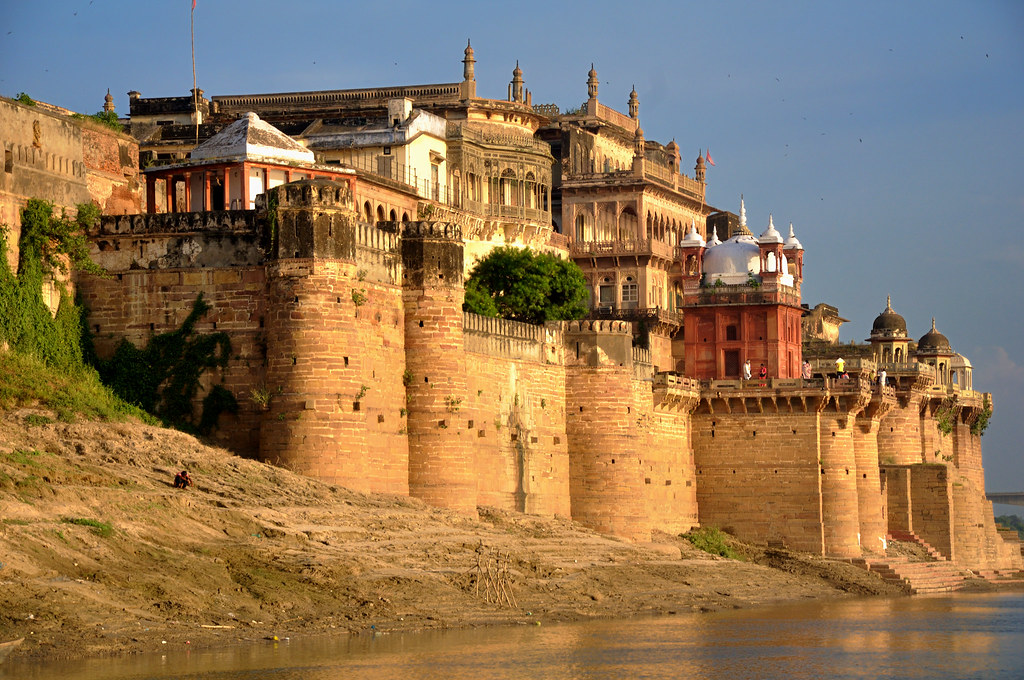By Shriya Tondon

At an estimated distance of ten kilometers from Varanasi, a city that according to Mark Twain is older than history, tradition and legend put together, sits. Ramnagar is a small and sacredly piquant city noted among the few for the Ramnagar Fort. It is renowned worldwide for its annual Ramlila. In enacting thousands of verses from Goswami Tulsidas’ Ramcharitmanas and imbuing a sense of religious spirituality among all its bewitched viewers, the Ramnagar Ramlila has justified all grounds for its universal pre-eminence. Starting off every year from the Anant Chaturdashi in Bhadra month of the Hindu calendar, it goes on till the Poornima of Ashwin month which is celebrated as Dussehra. Since its inception 2 centuries ago by the then ruler of Varanasi, famously known as Kashi Naresh, Maharaja Udit Narayan Singh, the tradition of this performance has selectively advanced in terms of its grandeur. Interestingly, it makes almost no use of the modern-day technology, and its splendour and veneration have mushroomed rather massively.
Rehearsals for the much-awaited occasion begin months in advance after the Maharaja, the patron of this Ramlila himself screens and selects the actors for the same. It is noteworthy that all chief characters are played by young boys and all female roles are performed by male actors only. Immersed in their sincerity and dedication to make the event a success, post the outset of practices, no actor is referred to by its real name until the end of the Ramlila. There is also a unique practice of the important roles being inherited by the members of a particular class or family. For instance, roles of Hanuman, Jatayu, and Janaka traditionally belong to one Vyasa family.
Unlike the usual staging of Ramlila, the one in Ramnagar lasts for a span of 31 days. However, it is not the only thing which makes it stand out. In this city, instead of presenting the Lila in one corner of the town, the entire town is transfigured into a vast ground for the Ramlila and various sites are designated to represent the variety of locations from the original tale of Lord Ram’s journey. In fact, parts of the city have even been named after the scenes from the epic such as Janakpuri, Ashok Vatika, Panchvati, Lanka, and so on and the audience, too, religiously moves with the performers to a different location for every new episode. This movement from one set to another is almost like a pilgrimage for the devout spectators.

The people’s regard for their nominal ruler has all but dwindled in all these years of independence and this is well reflected in their practice of kick starting the day’s proceedings only after Kashi Naresh has arrived. Before the day’s activities, the Niyamis take a ceremonial dip in the nearby waters, don new clothes, smear their foreheads with tilak and as a custom, carry with themselves ‘ittar’ to dab on all those who come requesting. These Niyamis are ‘sadhus’ who are committed to attending all days of the Ramlila and are crucial to the daily events. At the end of every episode, or Lila, an aarti is carried out by the pundits and the crowd joins them with devotion invoking the Supreme. On the last day, when Lord Ram emerges triumphant in the battle between the good and the evil by executing Ravana, millions of pilgrims arrive at this destination to join in the festivity.
In this Ram ki Nagri – Ramnagar, the Ramlila isn’t a mere spectacle to enjoy or an exhibition to evaluate. It is the staging of a story close to everyone’s heart, thereby compelling people to lose themselves into the charm of the script. People carrying their own versions of the Ramcharitmanas do not hesitate in repeating the verses from their text along with the performers on stage. They enter into the heavenly world of their beloved Gods and Goddesses, submitting to their piety and banishing everything else from their thoughts. The Ramnagar Ramlila has piqued the interest of numerous historians, writers, journalists and travellers for its relentless religious observance and simplicity in execution. With UNESCO inscribing Ramlila the status of Intangible World Cultural Heritage in 2008, the acclaim and prestige for the one in Ramnagar has only escalated seeing as it is one of the world’s oldest Ramlilas. This Ramlila is more than a crowd assembled to feast their eyes on an arresting act of drama, it is the coming together of millions of people to embrace a tradition as their own. It is more than the depiction of an age old saga but the mingling of a pious community with the source of its faith. Attending the Ramlila of Ramnagar is an unparalleled venture that everyone deserves to experience at least once in their lifetime.

